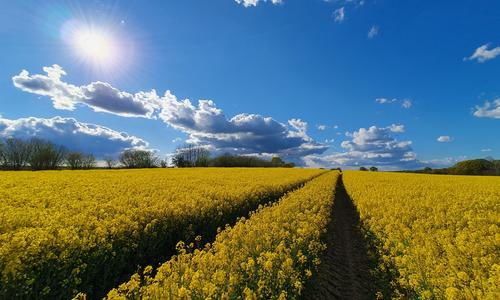Cabbage stem weevil

Kurz gefasst
- Beetles up to 3 mm in size, brownish-black. Characteristic are light back spot and reddish-brown feet. After maturation feeding, several eggs are laid on the underside of the leaf stalks. Damage is caused by larvae feeding in the stem marrow and secondary fungus at feeding sites and drill holes. Infested stems are often violet-black discoloured. Larvae pupate in the soil. Young beetles with harmless ripening food from July onwards, then migrate to winter storage. One generation/year.
CONTROL BENCHMARK
- Set up yellow traps early on the first warm days, often required as early as February.
- Influx often in several waves, is well detected by yellow traps. Place a yellow trap in the direction of possible winter stores.
- The control target is 15 beetles per yellow trap in 3 days. Depending on the temperature, beetles need approx. 1-2 weeks for maturing damage before egg laying begins. Use treatment margin for optimal treatment.
- Eggs and larvae can no longer be controlled.
PREVENTION
- Spare the natural opponent. Some species of trichogramma wasp as larval parasites; ground beetles eat some of the larvae as they migrate to pupate in the soil.
- If young beetles are found in the old rape seed during/after the rape harvest, the timely mulching of the rape stubble can contribute to decimation.







